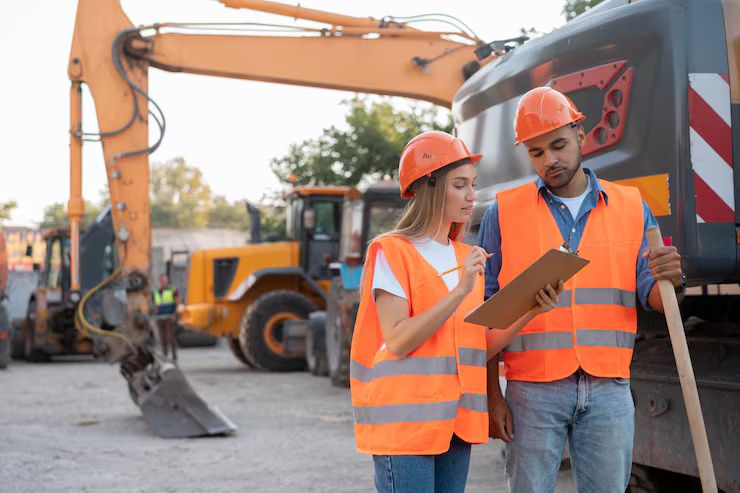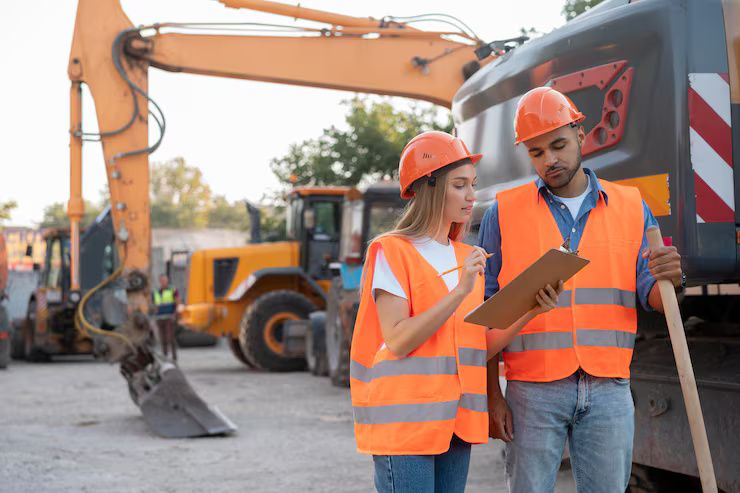Construction machines are mechanical equipment used to perform various construction tasks such as digging, lifting, transporting, grading, and demolition. These machines range from simple hand-operated tools to complex heavy machinery and are widely used in building roads, bridges, tunnels, homes, factories, and more.
The use of construction machinery has evolved over the years, improving efficiency, safety, and the quality of work. From steam-powered machines in the 19th century to modern diesel and electric-powered units today, these tools have become essential in construction work across the globe.

Why construction machines matter today
Construction machines are at the heart of nearly every infrastructure project. Their role is crucial in shaping the built environment, from residential buildings to highways, airports, and industrial plants.
Who is affected?
-
Construction companies and contractors
-
Engineers and architects
-
Government and municipal bodies
-
Real estate developers
-
Heavy equipment operators
-
General public (as beneficiaries of infrastructure)
Problems they help solve:
-
Reduce manual labor and increase productivity
-
Ensure project timelines are met
-
Improve accuracy and consistency in construction
-
Enhance safety for workers
-
Lower long-term operational costs
As urbanization increases and demand for infrastructure grows, construction machines become vital in meeting development goals efficiently.
Recent updates and trends in construction machinery (2024–2025)
The construction machinery industry has experienced several innovations and developments over the past year. These updates focus on automation, sustainability, and digital integration:
| Trend/Update | Description |
|---|---|
| Electric and hybrid machines | In 2024, major manufacturers like Caterpillar and Komatsu introduced electric excavators and loaders to reduce emissions and noise pollution. |
| Automation and robotics | Remote-controlled and autonomous machinery are gaining popularity, especially for repetitive tasks like grading and bricklaying. |
| Smart sensors and IoT | Equipment now comes with built-in sensors for real-time diagnostics, maintenance alerts, and fuel efficiency tracking. |
| 3D printing in construction | Large-scale 3D printers can now build housing components using minimal labor, as seen in pilot projects in the U.S. and Europe. |
| Rental platforms | Digital platforms offering on-demand construction equipment rental have grown, especially in Asia and the Middle East. |
These trends reflect a shift toward sustainable practices, increased efficiency, and integration with digital project management tools.
How construction machines are regulated
Construction machinery is subject to several regulations and policies to ensure safety, environmental compliance, and labor standards. These rules vary by country but generally fall under the following areas:
| Regulation Area | Description |
|---|---|
| Emission standards | Many countries enforce limits on emissions from construction equipment. For example, the EU has Stage V emission standards, while the U.S. follows EPA Tier 4 guidelines. |
| Occupational safety | Regulations require machine operators to undergo training and certification. Governments often mandate safety features like rollover protection and seat belts. |
| Noise control | Urban construction sites must comply with permissible noise limits, which affects machine selection and usage hours. |
| Import and usage laws | Some countries restrict the use of old or non-compliant machinery to promote safety and reduce pollution. |
| Public procurement policies | Government-funded projects may require the use of eco-friendly or locally manufactured equipment. |
Complying with these policies not only ensures legal operation but also improves worker safety and environmental sustainability.
Tools and resources for construction machinery management
Whether you're managing a small construction site or a large-scale infrastructure project, the right tools can streamline your operations and improve outcomes.
Useful apps and software:
-
Komtrax – Equipment management and telematics system by Komatsu
-
Caterpillar VisionLink – Machine monitoring and fleet management
-
PlanGrid – Construction project management and drawing collaboration
-
Fleetio – Tracks maintenance, fuel use, and inspection reports
-
Trimble Earthworks – Grade control software for excavators and dozers
Online platforms and resources:
-
EquipmentWatch – Provides equipment specifications and resale values
-
Construction Equipment Guide – News, updates, and listings for new and used machines
-
Ritchie Bros. Auctioneers – Global marketplace for buying and selling construction equipment
Templates and documents:
-
Equipment inspection checklists
-
Preventive maintenance schedules
-
Jobsite safety audit forms
Training and certification:
-
OSHA (Occupational Safety and Health Administration) courses (U.S.)
-
CPCS (Construction Plant Competence Scheme – UK)
-
ISO standards for equipment safety and operation
These tools and resources help project managers, contractors, and operators ensure machines are used efficiently, safely, and in compliance with regulations.
Frequently asked questions
1. What are the main types of construction machines?
Common types include excavators, bulldozers, loaders, graders, backhoe loaders, cranes, compactors, and pavers. Each serves a specific function like digging, lifting, or leveling.
2. How do electric construction machines compare to diesel models?
Electric machines produce zero emissions, operate more quietly, and often require less maintenance. However, they may have higher upfront costs and limited battery life for larger tasks.
3. Is it better to rent or buy construction equipment?
Renting is ideal for short-term use or rare tasks, reducing storage and maintenance costs. Buying makes sense for frequent use or when customization is required. Cost analysis and project scope help determine the better option.
4. What certifications are required to operate heavy construction machinery?
Requirements vary by country. In the U.S., OSHA mandates training for specific equipment. In the UK, CPCS certification is widely used. Operators typically need hands-on training and periodic renewals.
5. How often should construction machines be serviced?
Routine servicing depends on the manufacturer’s guidelines, but a common schedule includes daily inspections, weekly fluid checks, and quarterly or annual servicing based on hours of use.
Table: Summary of Common Construction Machines
| Machine Type | Primary Function | Typical Use Case |
|---|---|---|
| Excavator | Digging, trenching | Foundation digging, demolition |
| Bulldozer | Pushing materials | Land clearing, grading |
| Backhoe Loader | Digging & loading | Utility works, small construction sites |
| Wheel Loader | Material handling | Moving gravel, soil, sand |
| Grader | Smoothing surfaces | Road construction |
| Crane | Lifting heavy loads | High-rise building, bridge construction |
| Compactor | Soil compaction | Road base preparation |
| Paver | Laying asphalt | Road paving |
Final thoughts
Construction machines are essential tools in today’s fast-growing infrastructure sector. With advancements in technology, machines are now smarter, more efficient, and increasingly eco-friendly. Understanding the different types, uses, and benefits helps individuals and organizations make better decisions regarding equipment selection, usage, and compliance.
Whether you’re a contractor, engineer, policymaker, or simply curious about how things are built, having clear knowledge about construction machinery supports safer, faster, and more sustainable development.

